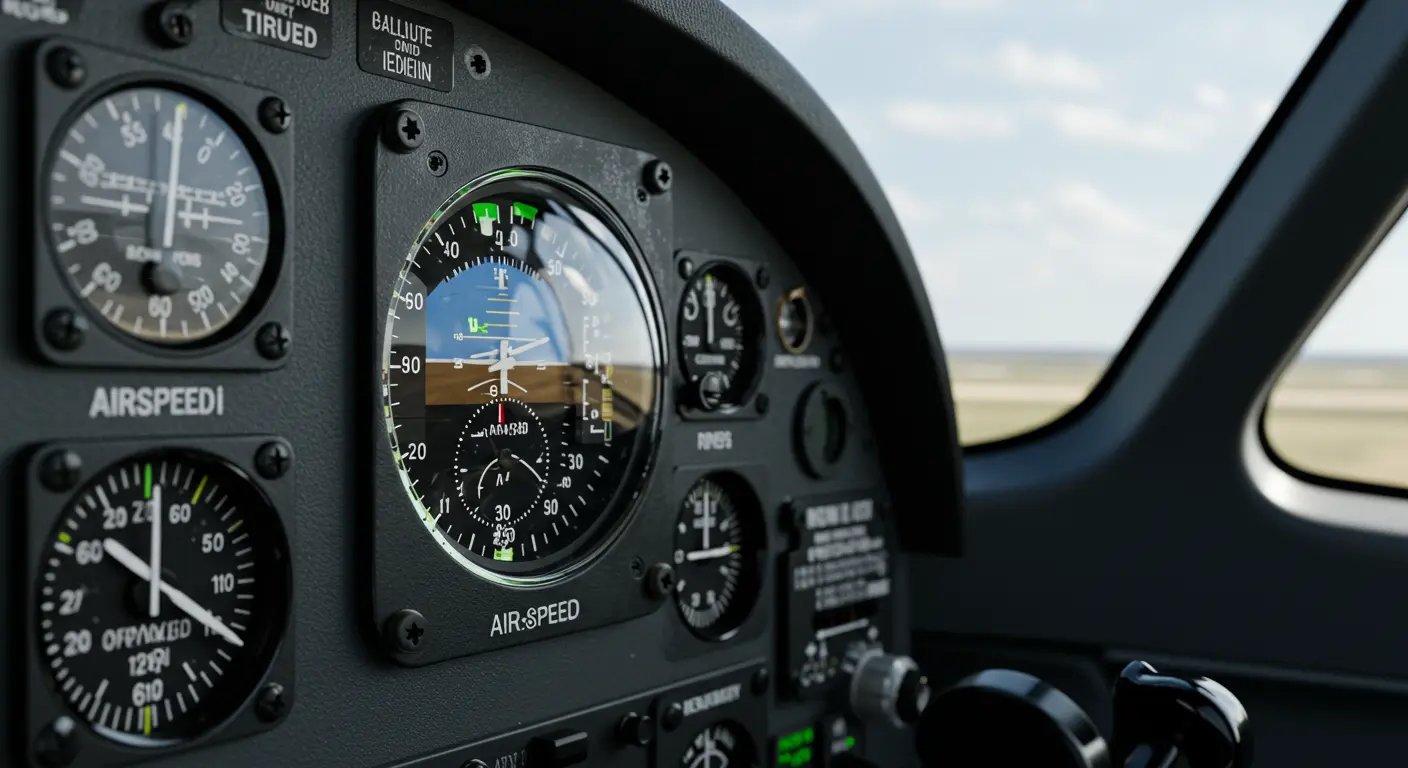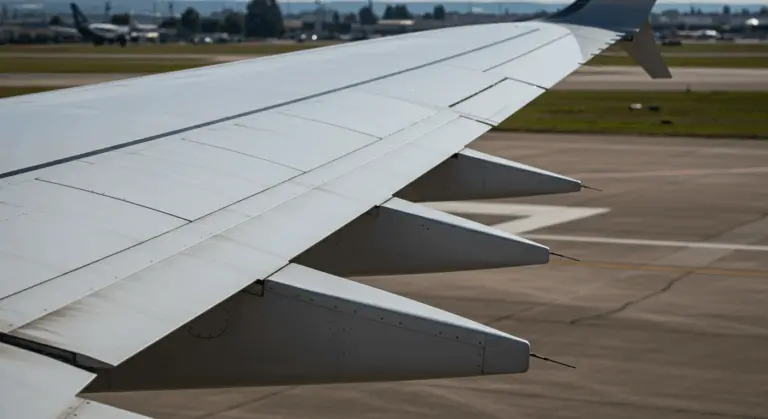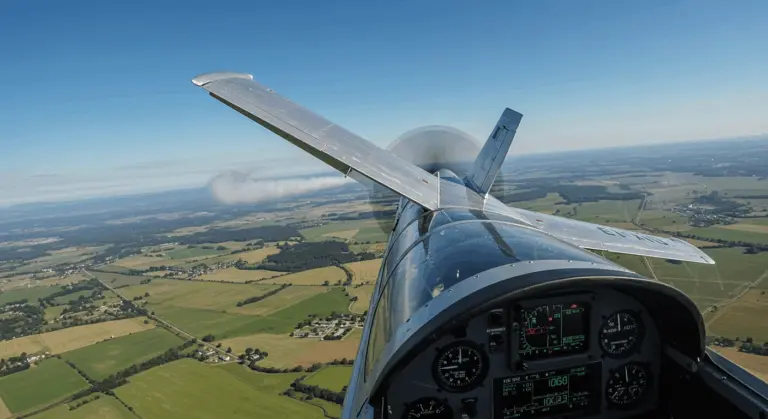Indicated Airspeed vs True Airspeed – Understanding the Differences
Understanding Indicated Airspeed (IAS)
Indicated Airspeed (IAS) represents the raw, unfiltered airspeed reading that appears directly on an aircraft’s airspeed indicator—the most fundamental measurement available to pilots in the cockpit. This basic reading serves as the cornerstone for all subsequent airspeed calculations. What distinguishes IAS? It remains deliberately uncorrected for instrument errors, position errors, or varying atmospheric conditions that surround the aircraft.
The airspeed indicator operates through the aircraft’s ingenious pitot-static system, comparing pitot pressure captured by the forward-facing pitot tube against static pressure drawn from ports along the fuselage. As this pressure differential grows with increasing speed, the indicator needle responds accordingly. IAS proves essential because it directly mirrors the dynamic pressure acting on the aircraft’s control surfaces.
A defining characteristic of IAS lies in its calibration against the International Standard Atmosphere (ISA) model, which assumes standard sea-level conditions (15°C/59°F temperature, 1013.25 HPA/29.92 ING pressure). This standardization ensures that performance charts, operating limitations, and critical speeds—stall, rotation, and maximum operating velocities—are universally expressed in indicated airspeed terms.
For pilots, IAS provides immediate, practical information about aerodynamic performance. Since lift and drag correlate directly with dynamic pressure, IAS becomes the primary reference for aircraft handling, regardless of altitude. This explains why critical maneuvers—takeoff, landing, stall recovery—are always executed with reference to indicated airspeed rather than true airspeed or ground speed.
What is True Airspeed (TAS)?
True Airspeed (TAS) reveals the aircraft’s genuine velocity through the surrounding air mass. Unlike Indicated Airspeed, TAS accounts for the effects of air density variations caused by changes in altitude and temperature. This correction transforms TAS into the most precise measure of an aircraft’s actual movement through its aerial environment.
IAS and TAS diverge significantly as altitude increases. At sea level, these measurements align closely. At higher altitudes, air density decreases substantially. Fewer air molecules reach the pitot tube, causing indicated airspeed to lag behind the aircraft’s true velocity. At an altitude of 10,000 feet, for example, true airspeed is typically about 20% higher than what’s shown on the indicated airspeed display.
While pilots control the aircraft using IAS—tied directly to aerodynamic forces—TAS becomes indispensable for navigation and flight planning. It is essential for:
-
Calculating ground speed by factoring in wind effects.
-
Determining fuel consumption rates.
-
Estimating time en route during cross-country flights.
Today’s aircraft frequently incorporate dedicated TAS indicators or sophisticated digital avionics that automatically compute true airspeed using pitot-static data and outside air temperature. In aircraft without these systems, pilots can determine TAS using manual calculations or specialized flight computers that correct indicated airspeed readings for the current atmospheric conditions. This conversion becomes increasingly important for operational efficiency, particularly during high-altitude cruise where the IAS-TAS disparity reaches its peak.
Key Differences Between IAS and TAS
| Aspect | Indicated Airspeed (IAS) | True Airspeed (TAS) |
| :— | :— | :— |
| Definition | A measure of dynamic pressure, uncorrected for atmospheric variables. | The actual speed of the aircraft through the surrounding air mass. |
| Primary Use | Aircraft handling, takeoffs, landings, and respecting structural limits. | Navigation, flight planning, and fuel calculations. |
| Effect of Altitude | Decreases relative to TAS as altitude increases. | Increases relative to IAS as altitude increases. |
| Correction Factors | Uncorrected for air density or temperature. | Corrected for air density (altitude and temperature). |
The Role of Calibrated Airspeed (CAS)
Calibrated Airspeed (CAS) occupies a crucial position in aviation’s measurement hierarchy, bridging indicated and true airspeed. It represents indicated airspeed that has been corrected for instrument and position errors inherent in airspeed indicator systems. These discrepancies arise from pitot tube positioning and inherent instrument imperfections.
Correction magnitudes fluctuate considerably based on aircraft configuration and flight conditions. During low-speed flight, especially with specific flap configurations, IAS-CAS differences can reach several knots. These corrections become particularly important during takeoff and landing, where airspeed precision directly affects safety margins. Most aircraft manufacturers address this by providing conversion tables in the Pilot’s Operating Handbook (POH) that allow pilots to convert Knots Indicated Airspeed (KIAS) to Knots Calibrated Airspeed (UCAS).
Under one specific scenario—sea level ISA conditions—calibrated airspeed perfectly matches true airspeed. This equivalence occurs because at sea level under standard conditions, the air density factors that differentiate CAS from TAS are neutralized. This equality vanishes rapidly with altitude changes or non-standard temperatures.
Since CAS offers a standardized reference accounting for each aircraft’s unique aerodynamic characteristics, numerous performance charts and operating limitations rely on calibrated airspeed values.
Impact of Air Density on Airspeed Measurements
Temperature significantly affects air density, which directly impacts airspeed measurements. Rising temperatures expand air molecules, similar to how altitude reduces air density. This phenomenon, known as density altitude, combines the effects of pressure altitude and temperature. On very hot days, aircraft near sea level can exhibit performance characteristics typically associated with much higher altitudes. For pilots, this means reduced lift, diminished engine performance, and potentially longer takeoff and landing distances.
Humidity adds another layer of complexity to air density calculations. Surprisingly, humid air is less dense than dry air—water vapor molecules (H₂O) weigh less than the nitrogen (N₂) and oxygen (O₂) they replace. Higher humidity thus reduces air density, compounding the effects of high temperature and altitude on airspeed measurements and aircraft performance.
As density altitude climbs, these conditions create several operational challenges:
-
Reduced lift and thrust generation
-
Increased stall speeds
-
Longer takeoff and landing distances
-
Greater adverse effects on heavy aircraft
Ground Speed vs True Airspeed
Ground speed and true airspeed, while intimately related, serve distinctly different roles in flight planning and navigation. While true airspeed (TAS) measures how fast an aircraft moves through the surrounding air mass, ground speed indicates how quickly the aircraft travels relative to the Earth’s surface. Their relationship follows a simple formula: ground speed equals true airspeed modified by wind effects.
Consider this practical scenario: if an aircraft maintains a true airspeed of 100 knots while benefiting from a 20-knot tailwind, its ground speed would be 120 knots. Conversely, when facing a 20-knot headwind with the same true airspeed, the ground speed would decrease to 80 knots. Crosswinds complicate matters, demanding vector calculations for precise ground speed and track determination.
These measurements serve distinctly different operational purposes for pilots. True airspeed remains essential for aircraft performance calculations and determining the aerodynamic capabilities of the aircraft in the current air mass. Ground speed, conversely, dominates arrival time estimates, cross-country fuel calculations, and route progress assessments.
GPS and modern navigation systems measure ground speed directly, delivering real-time progress data independent of wind conditions. This capability has significantly enhanced flight planning accuracy compared to earlier eras when pilots had to calculate ground speed manually using time and distance measurements between checkpoints.
This relationship becomes particularly important during long-haul flights, where wind effects can dramatically reshape flight duration and fuel consumption. A strong jet stream, for instance, can create ground speed differences of over 100 knots between eastbound and westbound flights along the same route, despite both aircraft maintaining similar true airspeeds. This phenomenon explains why eastbound and westbound flights between identical city pairs often show markedly different scheduled times.
Compressibility Effects in High-Speed Flight
Beyond 250 knots, aircraft encounter a phenomenon that fundamentally alters airspeed measurements: compressibility. This aerodynamic effect compresses air molecules entering the pitot tube, creating a growing gap between instrument readings and actual airspeed.
High-speed air compression inflates indicated airspeed readings beyond what actual dynamic pressure would suggest. This systematic error escalates with velocity—faster flight amplifies the disparity. For pilots of high-performance aircraft, this represents a critical safety consideration rather than merely theoretical knowledge.
Aviation addresses this through Equivalent Airspeed (EAS)—Calibrated Airspeed corrected for compressibility effects. EAS provides a more accurate measure of aerodynamic forces in high-speed flight.
Compressibility effects are most significant in jets and high-performance piston aircraft operating where these effects intensify. Without proper corrections, pilots risk misreading performance capabilities, potentially exceeding structural limits or miscalculating fuel consumption.
While modern systems often handle compressibility corrections automatically, pilots must still grasp the underlying principles. This knowledge becomes particularly valuable during instrument failures or when interpreting performance charts that reference different airspeed measurements. In the transonic range—approaching sound’s speed—these corrections become absolutely critical as compressibility effects intensify dramatically near Mach 1.
Conclusion: Importance of Understanding Airspeeds
Understanding airspeed differences goes beyond theoretical knowledge—it’s essential for flight safety governing every aspect from flight planning to split-second in-flight decisions.
Understanding airspeed represents one of aviation’s most practical applications of physics. By understanding how air density, temperature, pressure, and compressibility affect airspeed measurements, pilots develop the expertise needed to safely navigate the three-dimensional environment of flight across varying atmospheric conditions. This knowledge goes beyond operational efficiency—it provides the foundation for aviation safety that every pilot must master.







